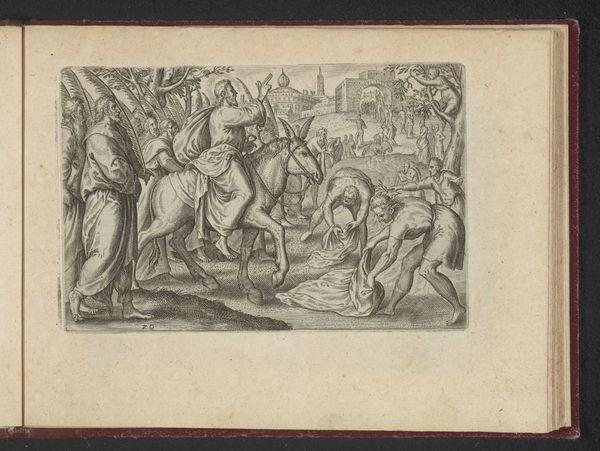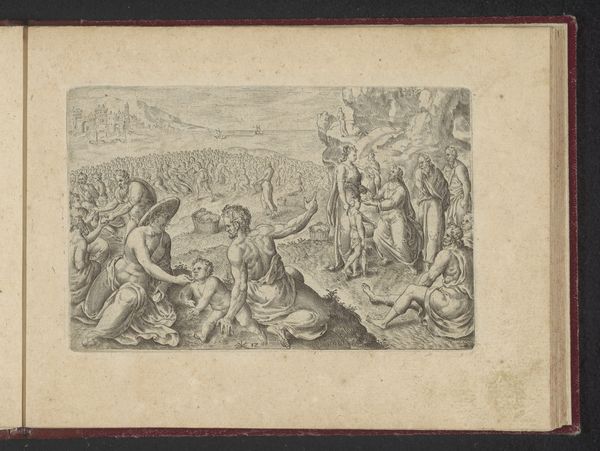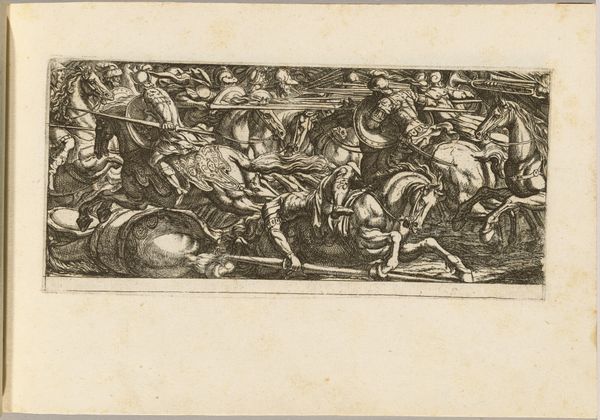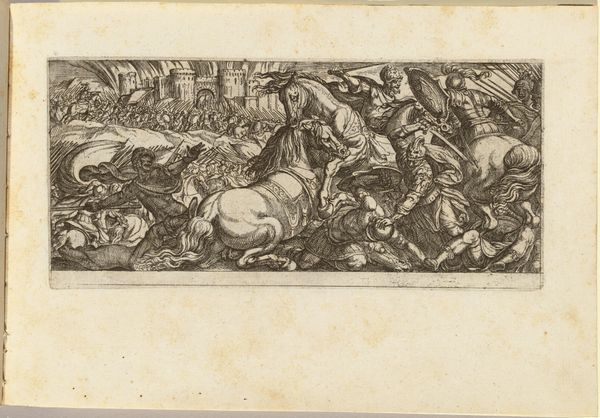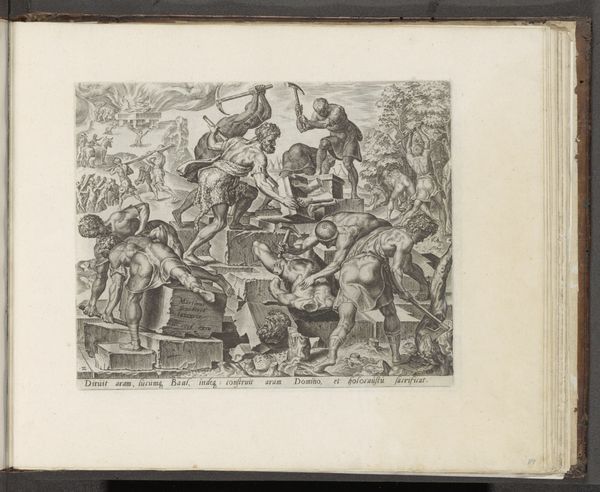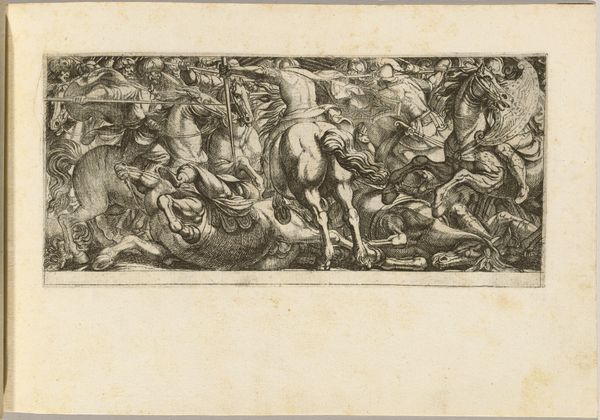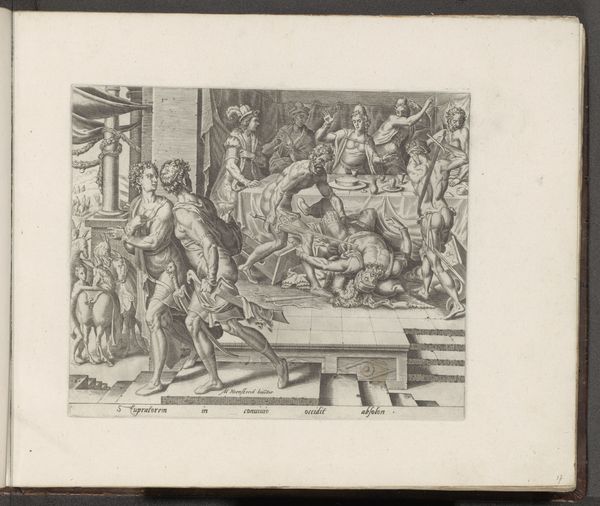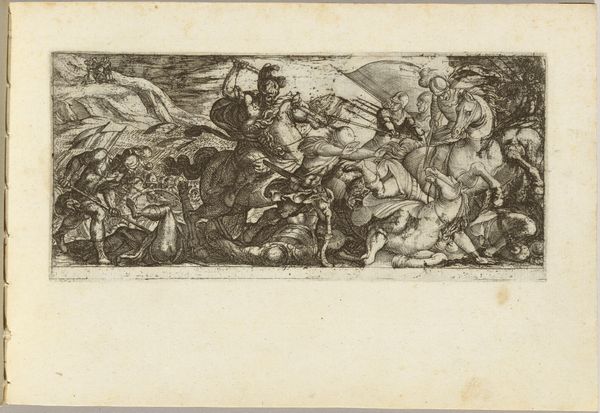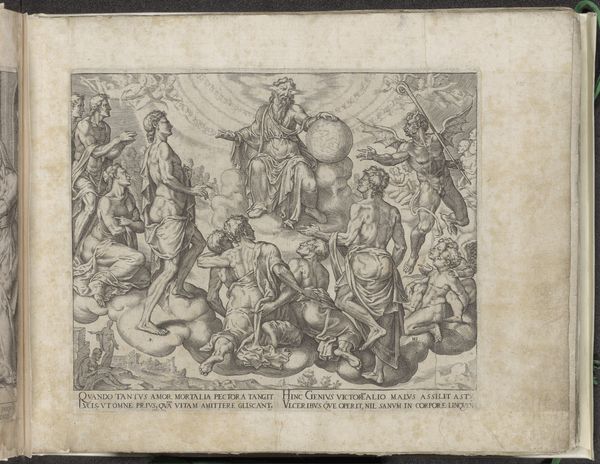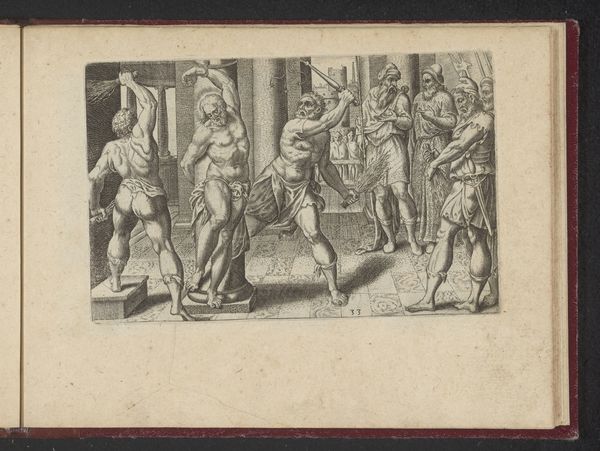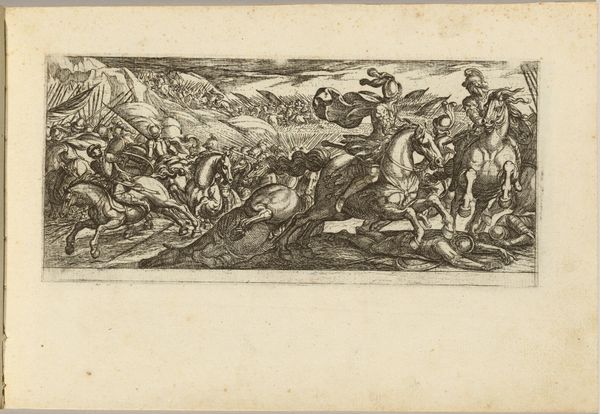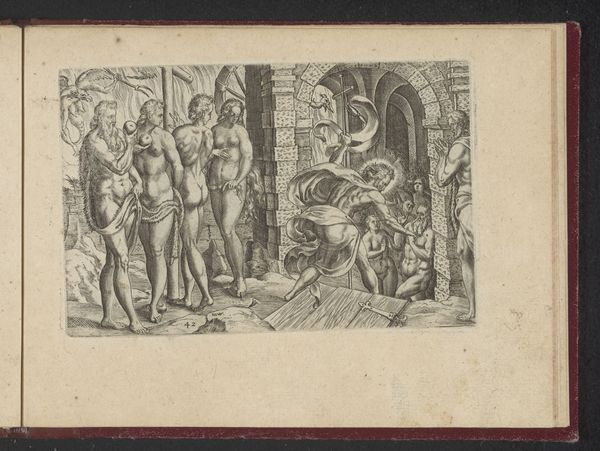
drawing, print, paper, ink, engraving
#
drawing
# print
#
figuration
#
paper
#
11_renaissance
#
ink
#
history-painting
#
engraving
Dimensions: height 92 mm, width 139 mm, height 137 mm, width 183 mm
Copyright: Rijks Museum: Open Domain
Curator: Editor: We're looking at "Christus aan het kruis genageld," or "Christ Nailed to the Cross," a print by Philips Galle from 1573. It's rendered in ink on paper through engraving. My initial feeling is one of stark brutality, emphasized by the crowded composition and the sheer number of figures involved. What do you see in this piece? Curator: Beyond the obvious religious narrative, I see a potent commentary on power, persecution, and the mechanics of oppression. Think about the historical context: 1573, the Dutch Revolt was raging. Galle, based in Antwerp, was witnessing firsthand the Spanish Crown's brutal suppression of Protestant dissent. Editor: So, the crucifixion isn't just a biblical scene, but also a reflection of contemporary political violence? Curator: Precisely. Consider the figures surrounding Christ. Are they simply carrying out orders, or do they actively revel in their actions? The composition implicates them – and us, the viewers – in the act. Galle invites us to question authority, to recognize how easily we can become complicit in injustice. How does the choice of engraving, a medium capable of mass reproduction, play into this? Editor: It suggests the widespread nature of oppression. By making it a print, Galle ensured this message could reach a wider audience, becoming a form of visual resistance. Curator: Exactly. And by situating it within the tradition of history painting, he elevates the subject to the level of important historical and political commentary. How does the contrast of light and dark influence your experience? Editor: It heightens the drama, drawing attention to Christ's suffering while simultaneously obscuring the faces of the oppressors, making them almost faceless agents of the state. It all speaks to broader struggles for freedom. Curator: That's a crucial point. Looking at this, it highlights the necessity to actively combat abuses of authority, regardless of the era. Editor: I see the artist's connection to broader, enduring themes of oppression and resilience so clearly now. It's unsettling, but it's a message that keeps echoing through time.
Comments
No comments
Be the first to comment and join the conversation on the ultimate creative platform.
